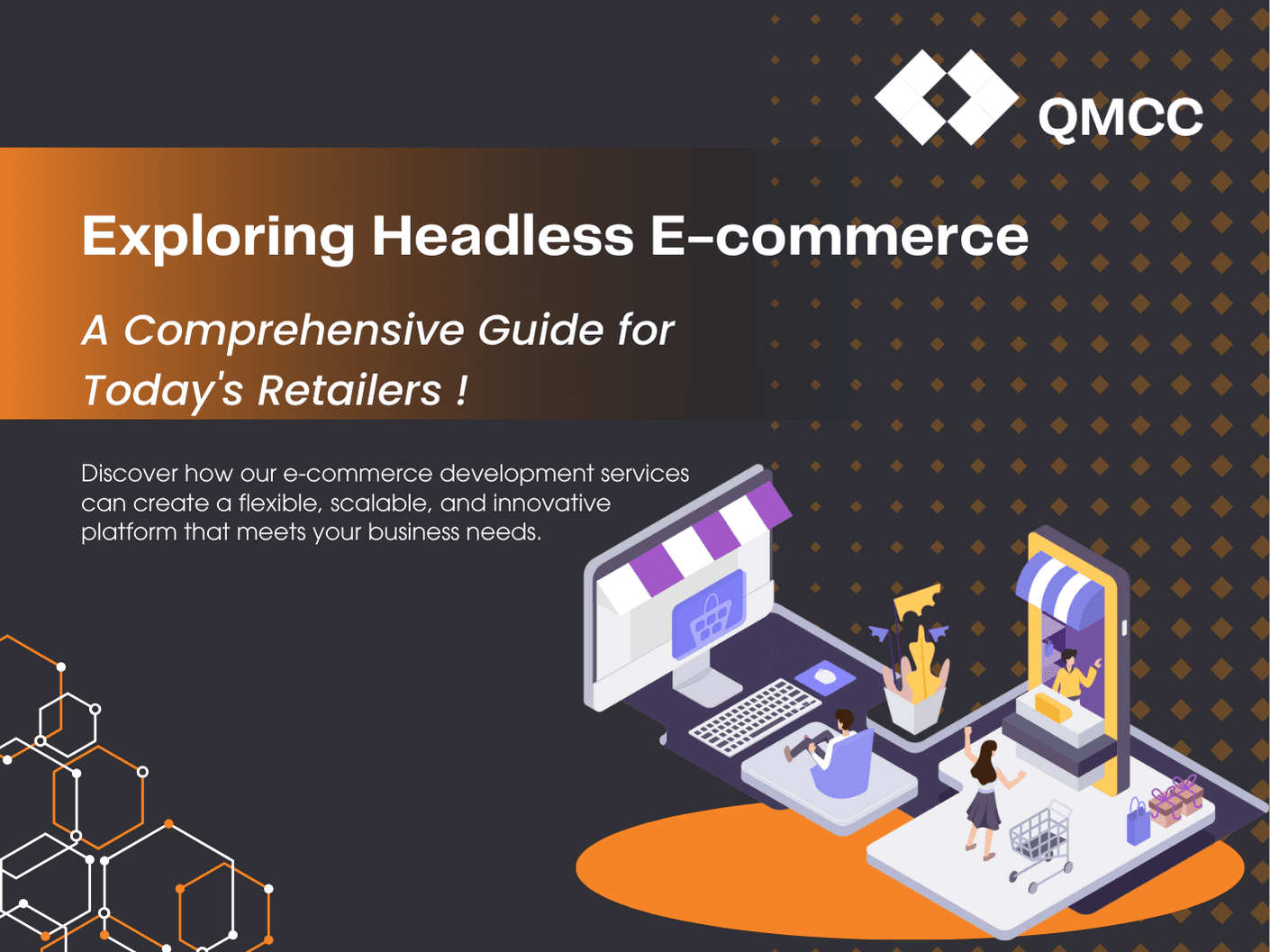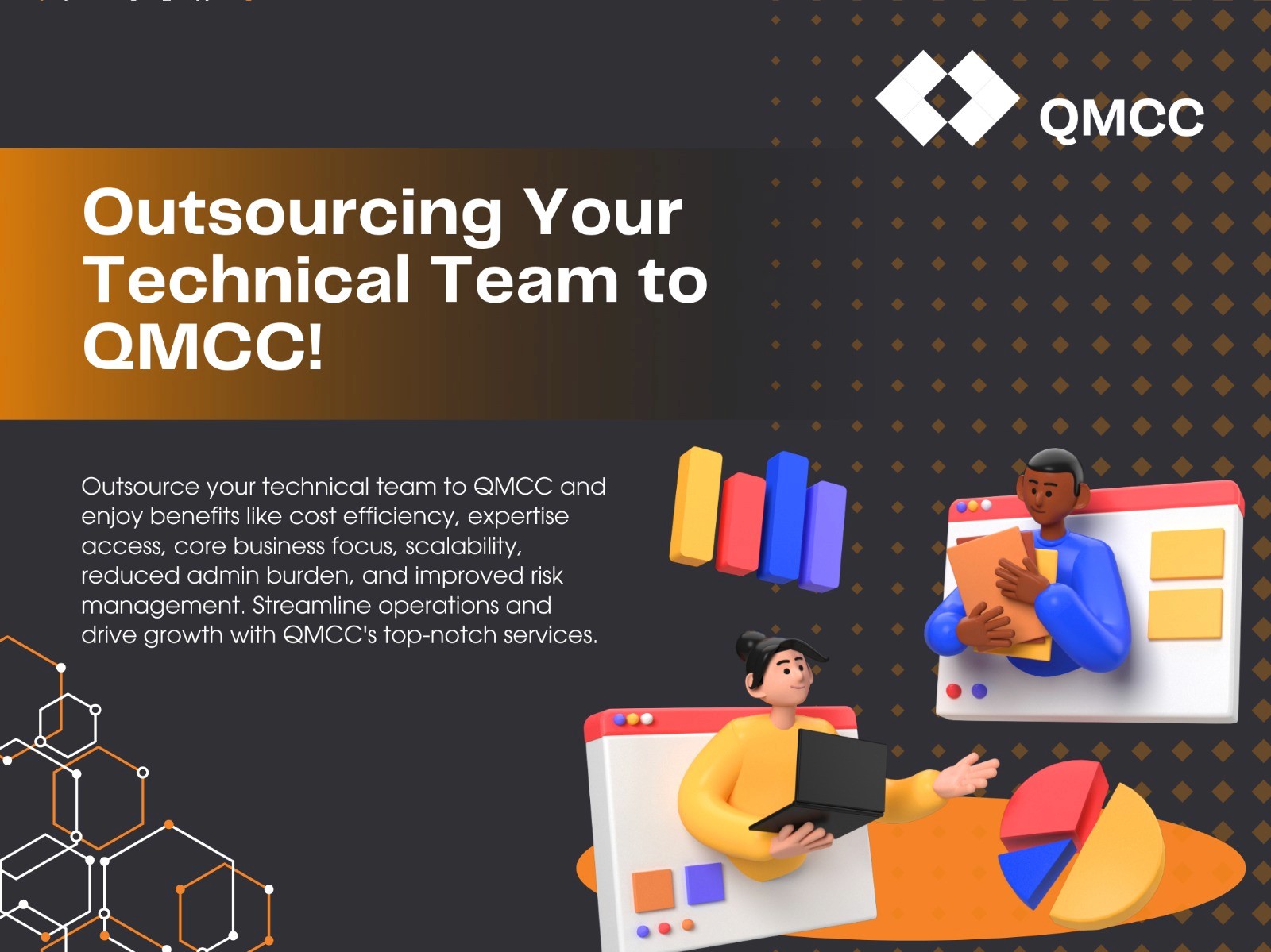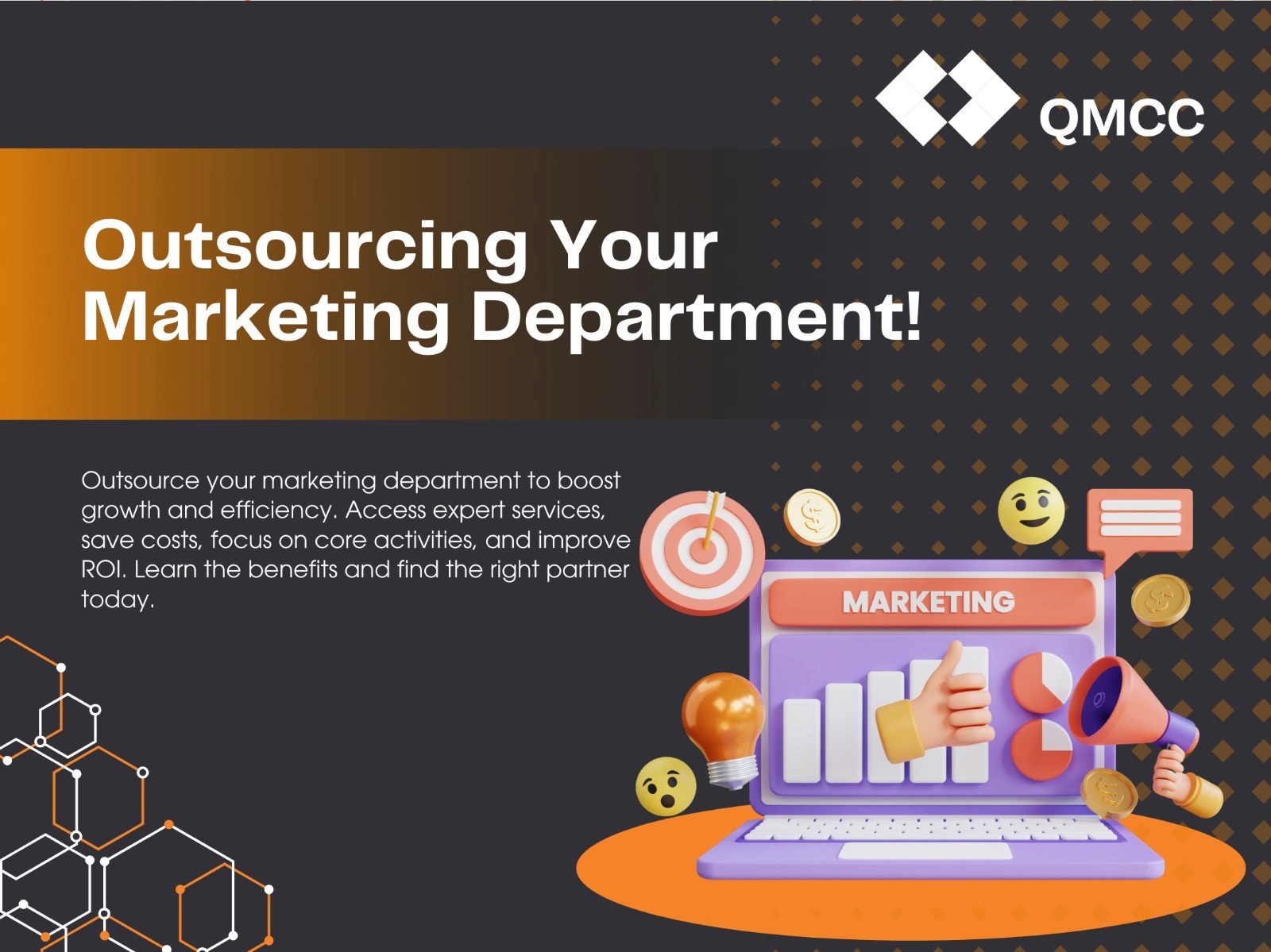
Exploring Headless E-commerce: A Comprehensive Guide for Today's Retailers

Exploring Headless E-commerce: A Comprehensive Guide for Today's Retailers
Table of Contents Introduction to Headless E-commerce Components of Headless E-commerce Advantages of Headless E-commerce Industries Leveraging Headless E-commerce Challenges in Headless E-commerce Future Outlook of Headless E-commerce Conclusion
Imagine having an online store where you're not tied down by its backend system, allowing you the freedom to innovate and customize the user experience as you wish. This is what headless e-commerce offers. As the digital market evolves, businesses need flexible solutions to keep pace. Headless e-commerce breaks away from traditional setups, providing the flexibility needed to enhance online retail experiences.
Let's dive into how headless e-commerce is transforming online retail and helping businesses deliver seamless, personalized experiences that keep customers coming back.
Introduction to Headless E-commerce
Headless e-commerce is a modern approach where the frontend (what users see) is separated from the backend operations. Unlike traditional e-commerce platforms that combine both frontend and backend technologies, headless e-commerce allows for greater customization and flexibility in designing user interfaces (UI).
Components of Headless E-commerce
1. Backend Commerce Functionality:
- The backend manages essential e-commerce functions like payment processing, inventory management, and order processing independently of the frontend UI.
2. Frontend Presentation Layer:
- The frontend is what users interact with and see. By decoupling it from the backend, businesses can use different tools and technologies to design and deliver content tailored to their brand and audience.
3. API-based Communication:
- APIs act as bridges between the frontend and backend, facilitating smooth data exchange and interaction. This allows for a more scalable and flexible system compared to traditional e-commerce setups.
Advantages of Headless E-commerce
Headless e-commerce offers several benefits over traditional systems:
- Flexibility in UI Design: Businesses can update UI designs independently of backend processes, enabling faster innovation.
- Freedom to Innovate: Separate frontend and backend enable quicker customization and feature updates based on real-time data and user feedback.
- API-driven Flexibility: APIs allow seamless integration with various systems and services, enhancing scalability and operational efficiency.
Industries Leveraging Headless E-commerce
Numerous industries are benefiting from headless e-commerce:
- Retail: Enhancing omnichannel experiences and streamlining inventory management.
- Fashion: Speeding up new collection releases and improving customer interactions via social media.
- Electronics: Managing complex product catalogs and integrating with IoT devices.
- Hospitality: Personalizing booking experiences and simplifying reservation management.
- Automotive: Enhancing online car-buying experiences and integrating with CRM systems.
Challenges in Headless E-commerce
While advantageous, headless e-commerce presents challenges:
- Implementation Complexity: Initial setup and integration between frontend and backend systems can be challenging.
- Technical Expertise: Requires skilled teams for development, integration, and API maintenance.
- Cost Implications: Upfront development costs and ongoing maintenance expenses need careful consideration.
Future Outlook of Headless E-commerce
The future of headless e-commerce looks promising:
- Emerging Trends: AI for personalization, PWAs for mobile experiences, and IoT integration for enhanced customer interactions.
- Adoption Rates: Increasing adoption across industries due to scalability, flexibility, and faster time-to-market.
- Influence on E-commerce Landscape: Driving a shift towards dynamic, customer-focused models prioritizing efficiency and user experience.
Conclusion
Headless e-commerce is at the forefront of online retail innovation. By separating frontend from backend functions, businesses can deliver personalized experiences, scale operations independently, and connect seamlessly across channels. In today's digital age, headless e-commerce is essential for adapting to changes, leveraging new technologies, and enhancing customer engagement.
For further insights into e-commerce trends, explore our article on AI in E-commerce: Shaping the Future of Customer Engagement.
Imagine having an online store where you're not tied down by its backend system, allowing you the freedom to innovate and customize the user experience as you wish. This is what headless e-commerce offers. As the digital market evolves, businesses need flexible solutions to keep pace. Headless e-commerce breaks away from traditional setups, providing the flexibility needed to enhance online retail experiences.
Let's dive into how headless e-commerce is transforming online retail and helping businesses deliver seamless, personalized experiences that keep customers coming back.
Introduction to Headless E-commerce
Headless e-commerce is a modern approach where the frontend (what users see) is separated from the backend operations. Unlike traditional e-commerce platforms that combine both frontend and backend technologies, headless e-commerce allows for greater customization and flexibility in designing user interfaces (UI).
Components of Headless E-commerce
1. Backend Commerce Functionality:
- The backend manages essential e-commerce functions like payment processing, inventory management, and order processing independently of the frontend UI.
2. Frontend Presentation Layer:
- The frontend is what users interact with and see. By decoupling it from the backend, businesses can use different tools and technologies to design and deliver content tailored to their brand and audience.
3. API-based Communication:
- APIs act as bridges between the frontend and backend, facilitating smooth data exchange and interaction. This allows for a more scalable and flexible system compared to traditional e-commerce setups.
Advantages of Headless E-commerce
Headless e-commerce offers several benefits over traditional systems:
- Flexibility in UI Design: Businesses can update UI designs independently of backend processes, enabling faster innovation.
- Freedom to Innovate: Separate frontend and backend enable quicker customization and feature updates based on real-time data and user feedback.
- API-driven Flexibility: APIs allow seamless integration with various systems and services, enhancing scalability and operational efficiency.
Industries Leveraging Headless E-commerce
Numerous industries are benefiting from headless e-commerce:
- Retail: Enhancing omnichannel experiences and streamlining inventory management.
- Fashion: Speeding up new collection releases and improving customer interactions via social media.
- Electronics: Managing complex product catalogs and integrating with IoT devices.
- Hospitality: Personalizing booking experiences and simplifying reservation management.
- Automotive: Enhancing online car-buying experiences and integrating with CRM systems.
Challenges in Headless E-commerce
While advantageous, headless e-commerce presents challenges:
- Implementation Complexity: Initial setup and integration between frontend and backend systems can be challenging.
- Technical Expertise: Requires skilled teams for development, integration, and API maintenance.
- Cost Implications: Upfront development costs and ongoing maintenance expenses need careful consideration.
Future Outlook of Headless E-commerce
The future of headless e-commerce looks promising:
- Emerging Trends: AI for personalization, PWAs for mobile experiences, and IoT integration for enhanced customer interactions.
- Adoption Rates: Increasing adoption across industries due to scalability, flexibility, and faster time-to-market.
- Influence on E-commerce Landscape: Driving a shift towards dynamic, customer-focused models prioritizing efficiency and user experience.
Conclusion
Headless e-commerce is at the forefront of online retail innovation. By separating frontend from backend functions, businesses can deliver personalized experiences, scale operations independently, and connect seamlessly across channels. In today's digital age, headless e-commerce is essential for adapting to changes, leveraging new technologies, and enhancing customer engagement.
For further insights into e-commerce trends, explore our article on AI in E-commerce: Shaping the Future of Customer Engagement.
Table of Contents Introduction to Headless E-commerce Components of Headless E-commerce Advantages of Headless E-commerce Industries Leveraging Headless E-commerce Challenges in Headless E-commerce Future Outlook of Headless E-commerce Conclusion
Imagine having an online store where you're not tied down by its backend system, allowing you the freedom to innovate and customize the user experience as you wish. This is what headless e-commerce offers. As the digital market evolves, businesses need flexible solutions to keep pace. Headless e-commerce breaks away from traditional setups, providing the flexibility needed to enhance online retail experiences.
Let's dive into how headless e-commerce is transforming online retail and helping businesses deliver seamless, personalized experiences that keep customers coming back.
Introduction to Headless E-commerce
Headless e-commerce is a modern approach where the frontend (what users see) is separated from the backend operations. Unlike traditional e-commerce platforms that combine both frontend and backend technologies, headless e-commerce allows for greater customization and flexibility in designing user interfaces (UI).
Components of Headless E-commerce
1. Backend Commerce Functionality:
- The backend manages essential e-commerce functions like payment processing, inventory management, and order processing independently of the frontend UI.
2. Frontend Presentation Layer:
- The frontend is what users interact with and see. By decoupling it from the backend, businesses can use different tools and technologies to design and deliver content tailored to their brand and audience.
3. API-based Communication:
- APIs act as bridges between the frontend and backend, facilitating smooth data exchange and interaction. This allows for a more scalable and flexible system compared to traditional e-commerce setups.
Advantages of Headless E-commerce
Headless e-commerce offers several benefits over traditional systems:
- Flexibility in UI Design: Businesses can update UI designs independently of backend processes, enabling faster innovation.
- Freedom to Innovate: Separate frontend and backend enable quicker customization and feature updates based on real-time data and user feedback.
- API-driven Flexibility: APIs allow seamless integration with various systems and services, enhancing scalability and operational efficiency.
Industries Leveraging Headless E-commerce
Numerous industries are benefiting from headless e-commerce:
- Retail: Enhancing omnichannel experiences and streamlining inventory management.
- Fashion: Speeding up new collection releases and improving customer interactions via social media.
- Electronics: Managing complex product catalogs and integrating with IoT devices.
- Hospitality: Personalizing booking experiences and simplifying reservation management.
- Automotive: Enhancing online car-buying experiences and integrating with CRM systems.
Challenges in Headless E-commerce
While advantageous, headless e-commerce presents challenges:
- Implementation Complexity: Initial setup and integration between frontend and backend systems can be challenging.
- Technical Expertise: Requires skilled teams for development, integration, and API maintenance.
- Cost Implications: Upfront development costs and ongoing maintenance expenses need careful consideration.
Future Outlook of Headless E-commerce
The future of headless e-commerce looks promising:
- Emerging Trends: AI for personalization, PWAs for mobile experiences, and IoT integration for enhanced customer interactions.
- Adoption Rates: Increasing adoption across industries due to scalability, flexibility, and faster time-to-market.
- Influence on E-commerce Landscape: Driving a shift towards dynamic, customer-focused models prioritizing efficiency and user experience.
Conclusion
Headless e-commerce is at the forefront of online retail innovation. By separating frontend from backend functions, businesses can deliver personalized experiences, scale operations independently, and connect seamlessly across channels. In today's digital age, headless e-commerce is essential for adapting to changes, leveraging new technologies, and enhancing customer engagement.
For further insights into e-commerce trends, explore our article on AI in E-commerce: Shaping the Future of Customer Engagement.
Other Blogs
Other Blogs
Check our other project Blogs with useful insight and information for your businesses
Other Blogs
Other Blogs
Check our other project Blogs with useful insight and information for your businesses
Other Blogs
Other Blogs
Check our other project Blogs with useful insight and information for your businesses


